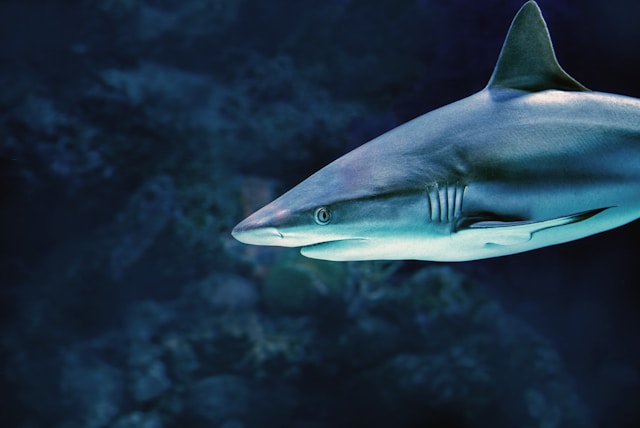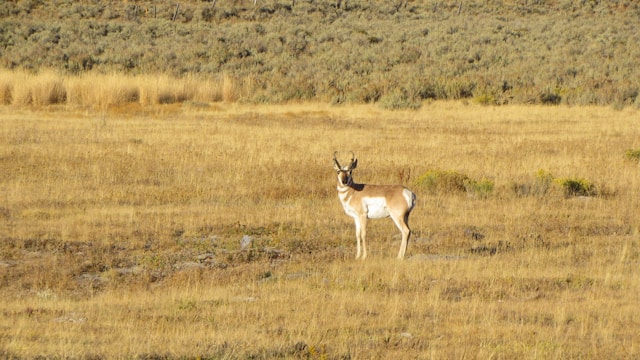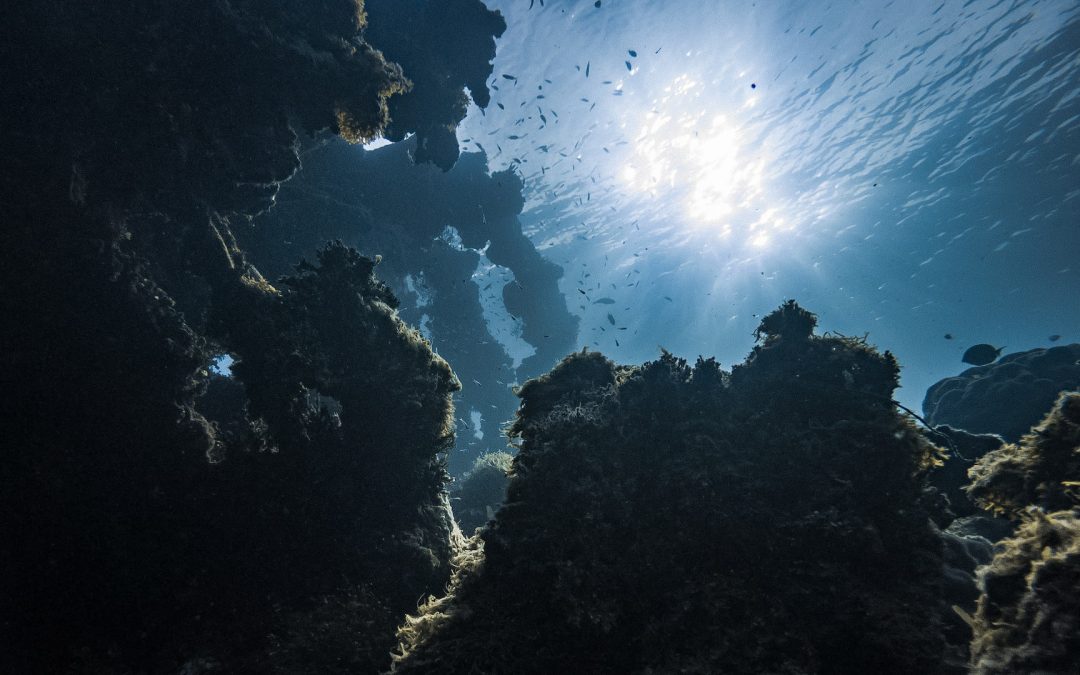
by Deep Green Resistance News Service | May 14, 2012 | Biodiversity & Habitat Destruction, Direct Action, NEWS, Repression at Home
By Shiv Malik / The Guardian
A veteran anti-whaling campaigner has been arrested in Germany on charges relating to an incident in 2002 when the boat he was piloting attempted to stop poachers illegally killing sharks.
The environmental activist organisation Sea Shepherd said Paul Watson had been detained at Frankfurt airport to answer a Costa Rican extradition warrant for “violating ships traffic”.
The incident took place in Guatemalan waters a decade ago when Watson’s boat, the Farley Mowat, encountered an illegal shark-finning operation run by a Costa Rican ship, the Varadero. Crew on the Varadero accused Watson of attempting to ram their boat and Watson was charged by Costa Rican authorities with attempted murder.
Watson’s charges were subsequently dismissed when a video of the incident filmed by a documentary crew was shown to the Costa Rican prosecutor. However, the charges were later re-investigated by a newly appointed prosecutor.
Established by Watson in Malibu, California, Sea Shepherd – which has had a number of celebrity backers such as Pierce Brosnan and Martin Sheen – has been involved in numerous anti-whaling and environmental protection actions in international waters.
In 2006 Watson was involved in a “daunting chase” when his boat for weeks pursued a Japanese whaling fleet over 4,000 miles along the Antarctic coastline.
Sea Shepherd said: “Captain Paul Watson was arrested on 12 May and has made contact from Frankfurt airport jail. He has been given periodic access to his mobile phone and is being treated well.
“A fisherman accused Paul of trying to kill him, although it is evident that Paul did not and that evidence is on film. He said the warrant dates back to an event in 2002.”
The statement added that Watson was scheduled to appear before a judge on Tuesday morning, and that it was unclear why the warrant had been re-issued.
Sea Shepherd said Watson was being assisted by Daniel Cohn Bendit, co-president of the Greens/Free European Alliance group in the European parliament, and José Bové, a group member.
“With Costa Rica’s rich biodiversity, it would be a travesty for them not to stand up for sharks, which sit at the highest levels of the food chain assuring balance among ecological communities in the ocean,” Sea Shepherd said.
“Paul is very touched by the concern on Facebook and Twitter and finds it very encouraging.”
From The Guardian
Photo by David Clode on Unsplash
by Deep Green Resistance News Service | May 11, 2012 | Biodiversity & Habitat Destruction
By the Associated Press
The U.S. Navy may hurt more dolphins and whales by using sonar and explosives in Hawaii and California under a more thorough analysis that reflects new research and covers naval activities in a wider area than previous studies.
The Navy estimates its use of explosives and sonar may unintentionally cause more than 1,600 instances of hearing loss or other injury to marine mammals each year, according to a draft environmental impact statement that covers training and testing planned from 2014 to 2019. The Navy calculates the explosives could potentially kill more than 200 marine mammals a year.
A notice about the study is due to appear Friday in the Federal Register.
The old Navy analysis — covering 2009-2013 — estimated the service might unintentionally cause injury or death to about 100 marine mammals in Hawaii and California, although no deaths have been reported.
The larger numbers are partially the result of the Navy’s use of new research on marine mammal behavior and updated computer models that predict how sonar affects animals.
The Navy also expanded the scope of its study to include things like in-port sonar testing — something sailors have long done but wasn’t analyzed in the Navy’s last environmental impact statement. The analysis covers training and testing in waters between Hawaii and California for the first time as well.
“Each time around, each time we swing through this process, we get better, we take a harder look, we become more inclusive,” said John Van Name, senior environmental planner at the U.S. Pacific Fleet.
The Navy isn’t saying it will injure whales and dolphins as it trains sailors and tests equipment. It’s telling the public and environmental regulators that its actions have the potential to harm or otherwise prompt a reaction in the animals.
The Navy takes a variety of measures to prevent harm to the animals, including turning off sonar when marine mammals are spotted nearby. It says the actual numbers of injured animals would be lower as a result.
Read more from The Washington Post:

by Deep Green Resistance News Service | May 7, 2012 | Biodiversity & Habitat Destruction, NEWS, Women & Radical Feminism, Worker Solidarity
By Wildlife Conservation Society
A study by the Wildlife Conservation Society documents that intense development of the two largest natural gas fields in the continental U.S. are driving away some wildlife from their traditional wintering grounds.
Researchers tracking 125 female pronghorn in Wyoming’s vast Jonah and PAPA gas fields using GPS collars discovered an 82 percent decline of habitat classified as “highest quality” – meaning highest probability of use for wintering animals. Widespread natural gas development in these areas, which are part of the Greater Yellowstone Ecosystem, has led to a sharp increase in well pads, roads, and other associated infrastructure. This in turn is driving pronghorn to the periphery of areas historically classified as crucial winter ranges, the five-year study says.
The study appears in the March, 2012 print edition of the journal Biological Conservation. Authors include Jon Beckmann and Rene Seidler of WCS; Kim Murray of Institute for Systems Biology; and Joel Berger of the University of Montana and WCS.
“In our study we have detected behavioral shifts for pronghorn in response to natural gas field development and infrastructure on federal BLM lands,” said Jon Beckmann of WCS’s North America Program and lead author. “By detecting behavioral changes, it is possible to identify threshold levels of gas field infrastructure development before any significant population declines. Maintaining the integrity of crucial wintering areas is particularly important in harsh winters to avoid diminishing pronghorn numbers.”
WCS has developed recommendations to protect pronghorn on BLM lands. Some of the recommendations include: baseline data being collected on population sizes and distribution prior to any development occurring. Data would then be used to define crucial winter range and keep development levels lower in key areas. Habitat and population levels should be monitored over time in both the gas fields and in similar control sites where no gas is being developed using scientifically rigorous methods to examine impacts of gas fields. Directional drilling should be used to reduce surface disturbance and limit habitat loss and fragmentation.
Fifty percent of North America’s pronghorn live in Wyoming, which are declining in other parts of the U.S. Herds from throughout the western half of the state winter in the region where the gas fields are located including the herd from Grand Teton National Park that conducts the longest overland migration in the continental U.S. Herds that were attracted to the mesa above the natural gas deposits with windswept flat terrain and subsequent lack of deep snow are now being forced into less desirable areas.
The authors warn that pronghorn can only lose so much winter range before they will begin to decline in population. Mule deer have already declined by more than 50 percent from this region.
Joel Berger, a WCS co-author on the study, said: “Ultimately this is a policy issue for petroleum extraction on U.S. public lands. In several cases science indicates that petroleum developments have had negative impacts on wildlife. We are hopeful that studies like these will inform future energy development on public lands in the West.”
From Wildlife Conservation Society: http://www.wcs.org/press/press-releases/natural-gas-development-linked-to-habitat-loss.aspx
Photo by Jason Butterfield on Unsplash

by Deep Green Resistance News Service | May 4, 2012 | Biodiversity & Habitat Destruction, Climate Change, NEWS
By Monash University
Changes in the ocean’s chemistry, as a result of increasing atmospheric carbon dioxide (CO2) levels, threaten marine plankton to a greater extent than previously thought, according to new research.
The research, published in Nature Climate Change, revealed around half the CO2 released through human activity dissolves in the ocean, where it forms carbonic acid leading to a decrease in seawater pH.
Scientists found the changes in the pH levels, along with global warming, could lead to poor growth if not death of marine plankton.
“On examining individual cells, we found many of the species were highly sensitive to increased acidity, reducing their individual silicification rates by 35-80%. These results revealed not only are communities changing, but species that remain in the community are building less-dense cell walls.”
Professor John Beardall from the School of Biological Sciences at Monash University collaborated with international researchers from Swansea University’s Centre for Sustainable Aquatic Research, who led the study, the Marine Biological Association, Plymouth, the University of Dundee and the University of Technology in Sydney.
Professor Beardall said the impact that ocean acidification-induced changes have on plankton was a major concern.
“This research suggests the impact of oceanic acidification upon marine plankton could be more serious than previously thought,” Professor Beardall said.
“Acidity levels will more than double by the end of the century as a result of the increase in CO2 levels in the ocean, but it is unclear how the growth of plankton will respond to this increase.”
Using mathematical modelling and their understanding of cellular physiology, the team has found that many marine plankton will experience a substantially more acidic environment than currently suggested.
Professor Beardall plans to develop the research further to understand the effects of ocean acidification and other aspects of climate change on key Australian phytoplankton species.
From Monash University News: http://www.monash.edu.au/news/show/global-warming-puts-oceans-plankton-under-greater-threat
Photo by Marek Okon on Unsplash
by Deep Green Resistance News Service | May 2, 2012 | Biodiversity & Habitat Destruction
By Jeremy Hance / Mongabay
For decades scientists have been warning that if global society continues with “business-as-usual” practices the result will be a mass extinction of the world’s species, an extinction event some researchers say is already underway. However, the direct impacts of global biodiversity loss has been more difficult to compile. Now a new study in Nature finds that loss of plant biodiversity could cripple overall plant growth.
“Some people have assumed that biodiversity effects are relatively minor compared to other environmental stressors,” lead author David Hooper with Western Washington University said in a press release. “Our new results show that future loss of species has the potential to reduce plant production just as much as global warming and pollution.”
Looking at nearly 200 studies, the researchers compiled data on how primary production, i.e. plant growth, and decomposition are impacted by biodiversity loss in a wide-variety of ecosystems. According to the study, it depends on the magnitude of biodiversity loss. If up to 20 percent of the world’s plant species are lost, the impact on growth will be “negligible” says the study. However if 21-40 percent of the world’s plants vanish, primary production would be hit to the tune of 5-10 percent, and if half the world’s plant species vanish, primary production will fall by 13 percent. Some biologists have warned that species could be halved by the end of this century.
“Our analyses suggest that biodiversity loss in the 21st century could rank among the major drivers of ecosystem change,” the authors write, noting that a 13 percent loss in primary production compares to the impact of anthropogenic climate change on primary production.
While scientists found that the overall loss in decomposition was generally less than primary production, it was still worrisome. Moreover, the lopsided nature in which biodiversity loss impacts production over decomposition could hamper ecosystems’ ability to sequester carbon.
“Species loss ranks among the major drivers of primary production and decomposition—key processes involved in the carbon cycle and the provisioning of many ecosystem services,” the authors write.
The paper is buoyed by a number of recent studies which have shown that the more biodiverse an ecosystem, the more productive it is.
Complicating the situation is the fact that the world is not just facing mass extinction, but a wide variety of global environmental issues including climate change, nutrient pollution, and ozone loss.
“The biggest challenge looking forward is to predict the combined impacts of these environmental challenges to natural ecosystems and to society,” says co-author J. Emmett Duffy of the Virginia Institute of Marine Science.
by Deep Green Resistance News Service | May 2, 2012 | Biodiversity & Habitat Destruction, Colonialism & Conquest, Indigenous Autonomy
By Survival International
The Enawene Nawe Indians of the Brazilian Amazon have said they feel ‘desperate’, as their annual fishing ritual has provided them with almost no fish.
This is the fourth year running that the Indians have encountered drastically low fish stocks in their rivers, and the second year in which the ritual could not be properly performed.
This year’s catch is reportedly even lower than in 2009, when the Indians faced a catastrophic food shortage.
The lack of fish is blamed on pollution from the dams being built in the Juruena river basin. The Indians did not give their consent for the project, and have warned, ‘We don’t want the dams dirtying our water, killing our fish, invading our lands.’
During the Yãkwa ritual, Enawene Nawe men spend months in the forest, building wooden dams to trap fish, then smoking the fish and taking them to their villages by canoe.
This is a key part of the tribe’s culture, and crucial to the Indians’ diet as they do not eat meat.
Brazil’s Public Ministry has implemented an ‘emergency program’ and ordered the government’s indigenous affairs department, FUNAI, and the dam construction companies, to buy fish for the tribe.
Yãkwa has been recognized as part of Brazil’s cultural and historic heritage, and UNESCO has called for it to be ‘urgently safeguarded’.
From Survival International: http://www.survivalinternational.org/news/8296



